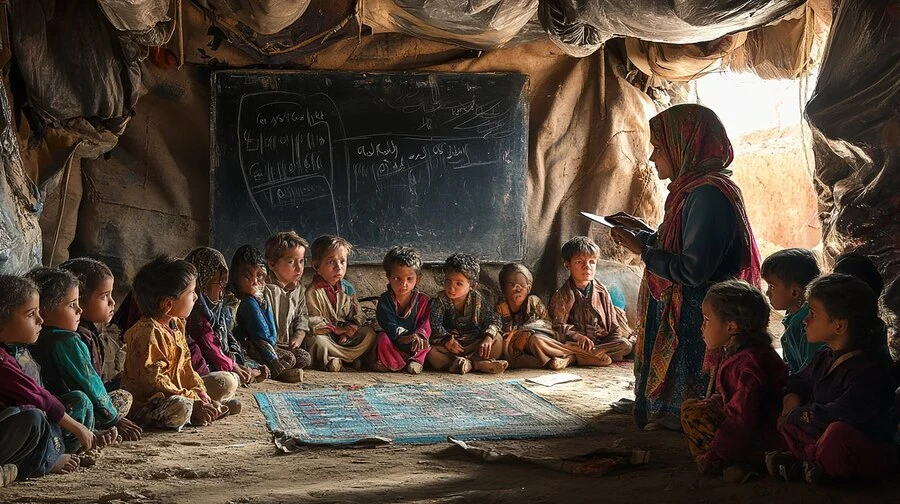The Yeshiva world represents a special and rapidly changing population of Jewish learning, tradition, and experience. Based on traditions dating back hundreds of years ago but rich in more recent presentations, the Yeshiva is the key structural and organizational form of modern Torah education and supply of religious practices shared by the majority of Orthodox Jews. Yeshivot (plural of Yeshiva) not only gives their students religious education, but helps to form their character, to give an understanding of where they belong, who they are, and for what. In this article, we will attempt to convey a message to the reader about the history, roles, beliefs, and problems of the Yeshiva world so that the reader can have a glimpse of how it works in a sense of religious sanctuary and educational institute.
The Historical Roots of Yeshivot
Yeshivot can be viewed as originating during the Talmudic period when studious centers emerged in Babylon and Palestine. The first of such institutions were the schools headed by famous teachers who found students willing to study the Torah and Talmud.proto~875~For the early centers of Jewish learning were the academies led by authoritative rabbis who had disciples who wanted to master all the finer points of the law. In these ancient Yeshivot, learning was a social process in which debate over religious texts dominated, and learning was done as a group. In centuries, it developed into a system with a clearly defined curriculum, which today is known as the educational model for the highest level of scholarship.
Most Yeshiva emerged especially in the Middle Ages when the Jewish communities established known institutions that include the Mainz Yeshiva, Prague, and the Vilna Gaon. Many of these became internationally famous for educating scholars that contributed to Jewish law, ethics as well as philosophy. This vibrant network of Yeshivot was almost entirely wiped out during the Holocaust period; however, after World War II, Jewry began to restart Yeshivot in Israel, North America, and other parts of the globe. Today, these institutions sustain conventional forms of Jewish education alongside responding to modern-day challenges.
The Structure of Modern Yeshivot
The structure of Yeshivot varies, but generally, there are three main types:
- Elementary and High School Yeshivot: These are Yeshivot for young students that offer combined religious and general education. The more fully integrated Yeshivot requires students to be taught traditional texts such as Chumash (the Five Books of Moses), Talmud, and Halacha, and Jewish law together with subjects of mathematics, science, and literature.
- Beit Midrash: For the students after high school usually between 18-22 years, the Beit Midrash (House of Study) would come in next. From the presented environment it prevails the Talmud study and frequently excludes any secular study altogether, especially in cases of extremistic ultra-Orthodox educational institutions. Traditional education is therefore usually done in twos, or chavrutas, a setting that fosters discussion and serious interaction with the scripture.
- Kollel: Kollels are modern learning facilities for married men who want to remain full-time Torah scholars. In principle and to a greater or lesser extent, many Kollel students are paid a salary to be able to devote themselves to religious immersion and, at times, to specialize in a tractate of the Babylonian Talmud or a Halakhic topic.
With these tiers, one can commit to a Torah life process starting from childhood up to adulthood and dying as a Torah sage.
Core Values and Philosophy
The Yeshiva world centers on a few key values that define its philosophy and approach:
- Torah as the Source of All Wisdom: The Yeshiva culture presupposes that knowledge and biblical law are the same, and the latter contains knowledge about everything people need in their lives. Education is not just intellectual but practicing knowledge and learning is a devotion and spirituality.
- Talmudic Debate and Critical Thinking: Yeshivot uses a specific form of debate known as the pilpul–deliberative analysis. What this method impresses upon students is the ability to reason, evaluate a given proposition or hypothesis, and draw conclusions based on the evidence and analysis, a quality which is both useful in faith and reason.
- Community and Brotherhood: A Yeshiva is not only a school of higher learning but rather a ‘family-like’ environment. Students, men, and women are very bound with their teachers through studying, praying, and even life experiences. Such comradeship is lifelong and results in highly developed communal organizations.
- Emphasis on Self-Discipline: The Yeshiva student has a highly regulated, Scheduled life. These study schedules include hours of study in one focused environment that could be exhausting. From this routine, therefore, a spirit of working and being committed is instilled in the learners which are valued in the society.
Challenges Facing the Yeshiva World
While the Yeshiva system has flourished, it faces modern challenges that have sparked internal debate and external scrutiny:
- Balancing Secular and Religious Education: Of course, in some of the Yeshivot there is either a lack of importance placed on secular education or the education itself is irrelevant. They have raised concerns about the readiness of students concerning careers outside the Yeshiva world. Certain groups of people call for the integration of both secular and religious subjects while others call for the adoption of cla Palestinian culture emphasizing a commitment to the study of Jewish law as the intellectual pursuit par excellence.
- Financial Sustainability: Some of the Yeshiva provides educational services with donations and therefore financials can be a constraint for such institutions. Tuition in Yeshivot is not fixed and while some draw funding from private dons others receive support from the community, government grants, and scholarships.
- Integration with Broader Society: Some of the Yeshiva provide educational services with donations and therefore financials can be a constraint for such institutions. Tuition in Yeshivot is not fixed and while some draw funding from private dons others receive support from the community, government grants, and scholarships.
- Balancing Tradition and Modernity: Yeshivot attempts to replicate traditional studying while facing contemporary questions such as the use of technology in the classroom, high percentages of mental illness, and shifting social culture among students. Some have pragmatically incorporated elements such as counseling for mental health, and sessions on social conduct despite the recognition that there are special areas where changes are necessary but fundamental principles cannot be compromised.
The Future of the Yeshiva World
The Yeshiva world is still expanding, especially in Israel and the United States, due to people’s concern with preserving Torah meditation. However, few Yeshivot are conforming to modern realities of life by providing occupational guidance or restricted general subjects. Some stick to their opinion about the fact that the Torah has to be preserved without any mixture or interference from outside the religious environment. Such diversity is seen within the Yeshiva world to show how it can progress but remain traditional at the same time.
Yeshiva education has also been enhanced by the increase in the internet sources of learning that provide online learning platforms. Virtual Yeshivot and general online Torah classes are a way for students who can not attend a standard Yeshiva to engage in structured learning. It has proven especially effective for women and the nutritionally challenged; thereby tremendously increasing the prospects of the Yeshiva world.
Conclusion
The Yeshiva society is a diverse, active, and socially saturated educational society focused on the concepts of Torah and the Jewish law. Despite the changing circumstances, the system of Yeshiva has continued to evolve and seek out generations of scholars, leaders, and members of society. Despite the challenges that it has encountered the Yeshiva world has been very responsive to adaptive changes hence allowing for continued growth without compromising the core values. The contemporary Yeshiva world demonstrates the resilience of belief, study, and holiness as values in Jewish culture.



